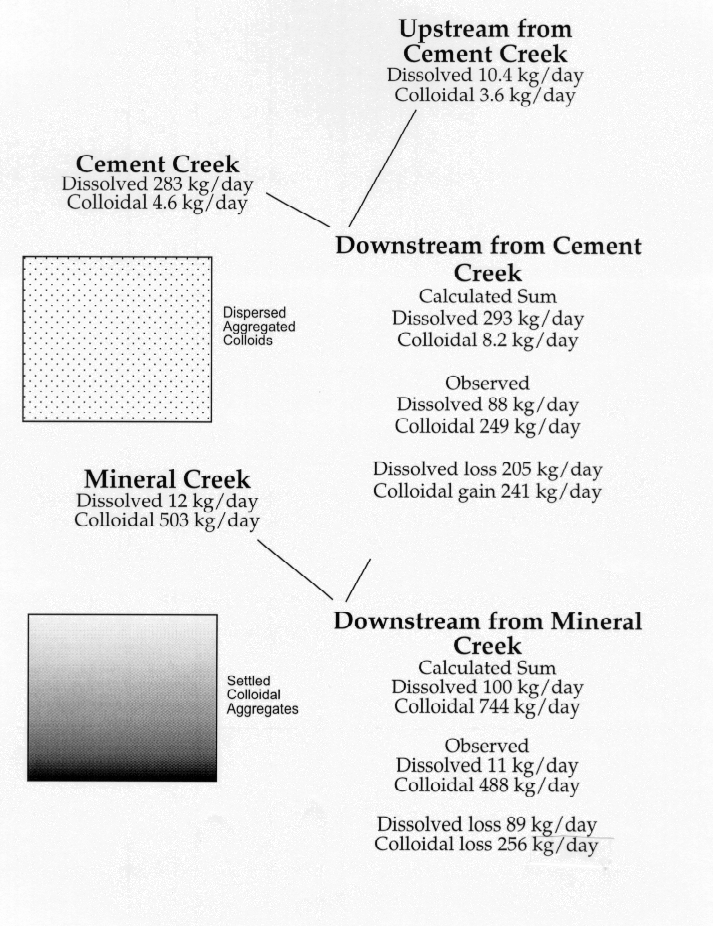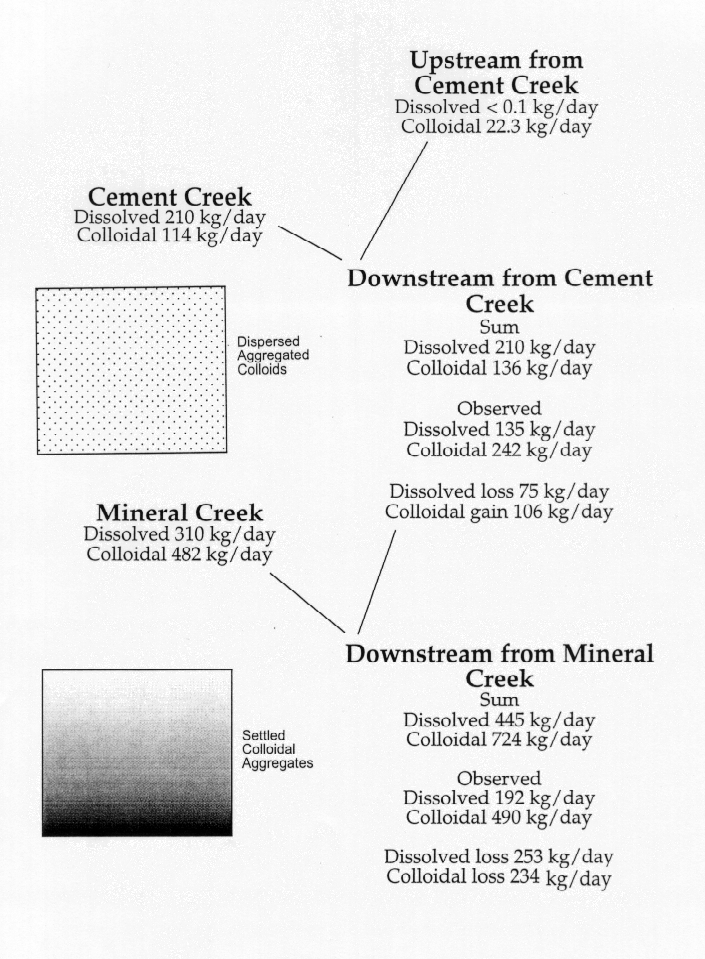The samples that were collected during snowmelt runoff in 1996 indicated substantial differences in the transport of metals between low-flow and high-flow conditions. Ultrafiltration of the samples, as described in appendix II, provided the best possible measure of the dissolved and colloidal metal concentrations at both stages of discharge. The principal differences in transport patterns between low and high flow were the dominance of colloidal transport processes during high flow, and the greater mass of dissolved and colloidal material transported during high flow.
Dominance of the colloidal load was evident with the transport of aluminum (fig. 18A). At low flow, the colloidal load steadily decreased downstream from Silverton to the point where the dissolved load slightly exceeded the colloidal load at Durango (fig. 15). In contrast, the colloidal load increased continuously downstream during each of the three high-flow sampling trips. The colloidal load was about 10 times greater than the dissolved load during high flow. Dissolved and colloidal iron showed the same general pattern as aluminum (fig. 18B). In particular, the increase in the colloidal iron load from Silverton to Durango was very large compared to the low flow. However, dissolved and colloidal zinc varied from the iron and aluminum patterns because dissolved zinc transport was comparable to the colloidal transport at Silverton. Downstream at Durango and Cedar Hill, colloidal zinc transport was dominant(fig. 18C).
Cadmium, copper, and lead had the same seasonal pattern as aluminum, iron, and zinc. Concentrations of dissolved cadmium were near detection limits in all samples, but concentrations of colloidal cadmium were measurable. During high flow, the colloidal load of cadmium at Durango was 4.3 and 5.6 kg/day for the first two high-flow sampling trips, compared to 0.3 kg/day at low flow (fig. 18D) . Colloidal copper loads increased even more between low and high flow, from 1.5 kg/day to greater than 133 kg/day during the May 1996 period
(fig. 18E). The increase in the colloidal lead load at Durango was comparable to copper, from less than 3 kg/day to greater than 220 kg/day (fig. 18F). Thus, even though the loads of colloidal cadmium, copper, and lead were small in comparison to loads of aluminum, iron and zinc, these loads increased greatly during high flow and could have effects on toxicity if the metals entered the food chain or became bioavailable in some way.

Not only was the colloidal load the dominant phase for these six metals, but the mass of colloidal load at high flow was much greater than at low flow. For example, at Durango, the colloidal zinc load was 15 kg/day during low flow, but 1,060, 1,450, and 114 kg/day were observed during the three high-flow sampling periods. High-flow trends of colloidal aluminum and zinc loads were comparable. Thus, during high flow from snowmelt runoff, the colloidal material that was deposited in the bed sediments during low flow was resuspended and flushed downstream. This annual event has important implications for water use downstream because water piped or stored from the Animas River during high flow will have a much greater colloidal load than at low flow. Without filtration and removal from the water, these colloids would be transported through any pumping system almost as if they were dissolved solutes.